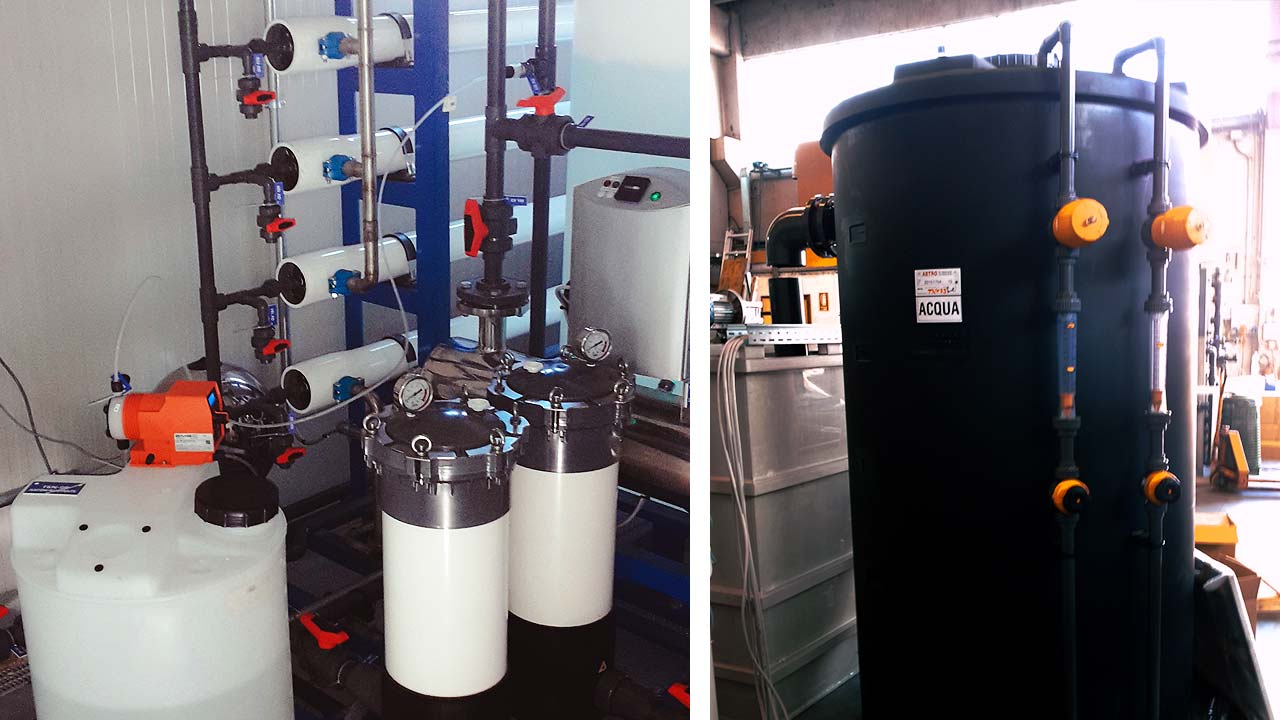
Water Chlorination
When the water stream has an excessive bacterial load, its chlorination is carried out, thus dosing sodium hypochlorite. This reagent allows for theabatement of the microbiologically active substances present.
To break down microbiologically active substances, a Water Chlorination Plant is used, with which a sodium hypochlorite solution is dosed.
This is the most widely used process for disinfection and drinking water, based on monitoring the concentration of pollutant species entering the water stream and dosing an oxidant, with which water sterilization occurs.

How a Water Chlorination Plant Works
In order to eliminate bacteria, it is necessary to ensure a contact time of about 30 minutes between the stream and the sodium hypochlorite: during this time, the reagent oxidizes any living forms that may be in the fluid.
At a later stage, the stream undergoing treatment is passed over a bed of activated carbon, which has the function of retaining free chlorine.
At the outlet of theChlorination plant, theoxidant valueis close to zero, so thewater can be considered potable and free of bacteria.
Finally, in order to ensure the level achieved by the treatment also on the pipelines downstream of the plant, a dosage of sodium hypochlorite is made for maintenance, about 0.10-0.20 mg/ l (mg/l).
This type of planting is essential for the health of the organism and for achieving suitable references for production.
It is precisely for the latter reason that Coind'sWater Chlorination Plant, in addition to tanks used for storage and pumps for chlorine dosing, includes technical analytical instruments, with which monitoring of each stage of the process is enabled.
